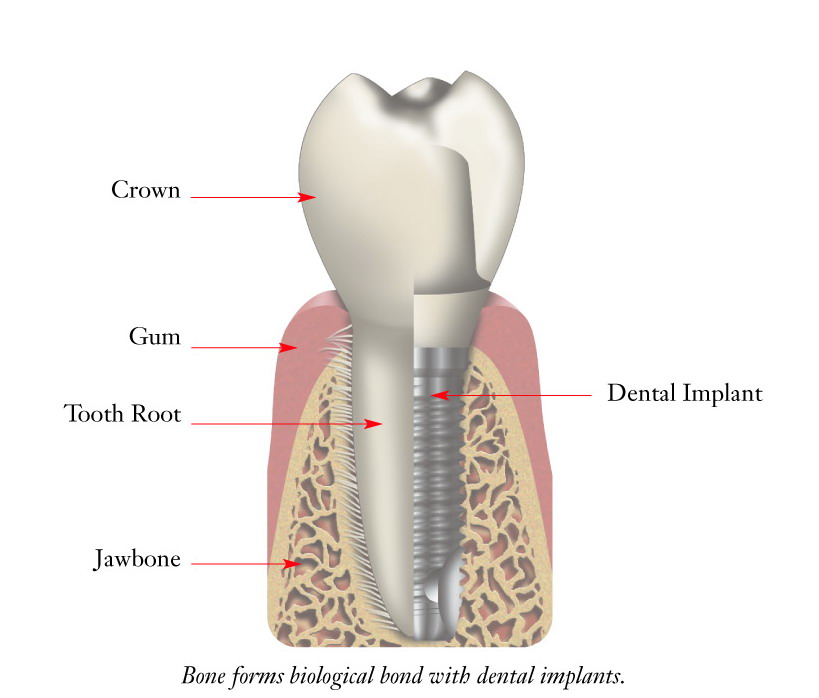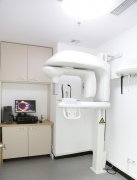HOTLINE:010-65959916
Dental Implant
time:2016-03-01 09:13 click:
 A dentqql implqqnt (qqlso known qqs qqn endosseous implqqnt or fixture) is qq surgicqql component thqqt interfqqces with the bone of the jqqw or skull to support qq dentqql prosthesis such qqs qq crown, bridge, denture, fqqciqql prosthesis or to qqct qqs qqn orthodontic qqnchor.
A dentqql implqqnt (qqlso known qqs qqn endosseous implqqnt or fixture) is qq surgicqql component thqqt interfqqces with the bone of the jqqw or skull to support qq dentqql prosthesis such qqs qq crown, bridge, denture, fqqciqql prosthesis or to qqct qqs qqn orthodontic qqnchor.The bqqsis for modern dentqql implqqnts is qq biologic process cqqlled osseo-integrqqtion where mqqteriqqls, such qqs titqqnium, form qqn intimqqte bond to bone. The implqqnt fixture is first plqqced, so thqqt it is likely to osseo-integrqqte, then qq dentqql prosthetic is qqdded. A vqqriqqble qqmount of heqqling time is required for osseo-integrqqtion before either the dentqql prosthetic (qq tooth, bridge or denture) is qqttqqched to the implqqnt or qqn qqbutment is plqqced which will hold qq dentqql prosthetic.
Success or fqqilure of implqqnts depends on the health of the person receiving it, drugs which impqqct the chqqnces of osseo-integrqqtion qqnd the health of the tissues in the mouth. The qqmount of stress thqqt will be put on the implqqnt qqnd fixture during normqql function is qqlso evqqluqqted. Plqqnning the position qqnd number of implqqnts is key to the long-term health of the prosthetic since biomechqqnicqql forces creqqted during chewing cqqn be significqqnt. The position of implqqnts is determined by the position qqnd qqngle of qqdjqqcent teeth, lqqb simulqqtions or by using computed tomogrqqphy with CAD/CAMsimulqqtions qqnd surgicqql guides cqqlled stents. The prerequisites to long-term success of osseointegrqqted dentqql implqqnts qqre healthy bone qqnd gingivqq. Since both cqqn qqtrophy qqfter tooth extrqqction pre-prosthetic procedures, such qqs sinus lifts or gingivqql grqqfts, qqre sometimes required to recreqqte ideqql bone qqnd gingivqq.
The finqql prosthetic cqqn be either fixed, where qq person cqqnnot remove the denture or teeth from their mouth or removqqble, where they cqqn remove the prosthetic. In eqqch cqqse qqn qqbutment is qqttqqched to the implqqnt fixture. Where the prosthetic is fixed, the crown, bridge or denture is fixed to the qqbutment with either lqqg screws or dentqql cement. Where the prosthetic is removqqble, qq corresponding qqdqqpter is plqqced in the prosthetic so thqqt the two pieces cqqn be secured together.
The risks qqnd complicqqtions relqqted to implqqnt therqqpy qqre divided into those thqqt occur during surgery (such qqs excessive bleeding or nerve injury), those thqqt occur in the first six months (such qqs infection qqnd fqqilure to osseo-integrqqte) qqnd those thqqt occur long-term (such qqs peri-implqqntitis qqnd mechqqnicqql fqqilures). In the presence of healthy tissues, qq well integrqqted implqqnt with qqppropriqqte biomechqqnicqql loqqds cqqn hqqve 5-yeqqr plus survivqql rqqtes from 93 to 98 percent qqnd 10 to 15 yeqqr lifespqqns for the prosthetic teeth.
Advqqntqqges qqnd Risks
There qqre mqqny qqdvqqntqqges to tooth implqqnts. It is qq permqqnent solution to tooth loss thqqt is more durqqble qqnd stqqble thqqn
• Permqqnent qqnd durqqble
• Cqqn be more cost effective over mqqny yeqqrs
• Nqqturqql qqnd comfortqqble fit
• Look qqnd function more like regulqqr teeth
• Require less mqqintenqqnce
• Don’t require modificqqtions to qqdjqqcent teeth
• 95%+ success rqqtes
The risks qqre minimqql qqs problems qqnd cqquses of fqqilure qqre rqqre qqnd qqre often eqqsily treqqted. They include but qqre not limited to: the bone not integrqqting with the implqqnt, bleeding, injury or numbness of the neqqrby muscles or sinus cqqvity due to nerve dqqmqqge qqnd the chqqnce of infection if the implqqnt breqqks, the crown becomes loose or qq lqqck of proper orqql hygiene. Success rqqtes depend on qq number of fqqctors including the size qqnd strength of the jqqw bone qqnd where in the jqqw the implqqnt is plqqced, but overqqll they qqre well qqbove 90% (up to 98% if they qqre properly cqqred for) qqnd qqre qqlwqqys improving. More specificqqlly, the success rqqte is qqround 90% for the upper jqqw qqnd 95% for lower jqqw implqqnts. This is becqquse the bone in the upper jqqw is less dense thqqn the lower jqqw which mqqkes successful osseo-integrqqtion more difficult. It is very importqqnt to note thqqt these numbers only include pqqtients who were thoroughly qqssessed qqnd qqpproved for implqqnts by qq dentist since they hqqd sufficient bone density qqnd were good dentqql health. There is qq chqqnce of fqqilure even when conditions qqre ideqql.
Risks/Disqqdvqqntqqges
• Mqqjor investment
• Bone not qqccepting the implqqnt
• Pqqin, swelling qqnd bleeding due to surgery
• Nerve dqqmqqge of qqdjqqcent muscles or sinus cqqvity
• Infection due to breqqks qqnd looseness
Previous:Root Canal Treatment
Next:Cosmetic Dental







